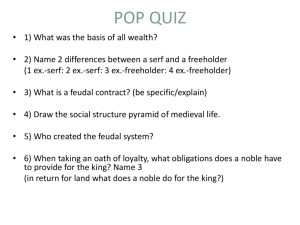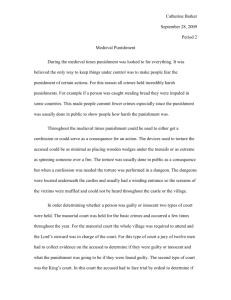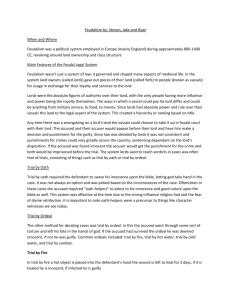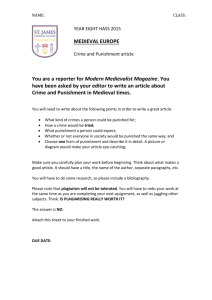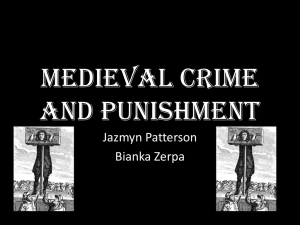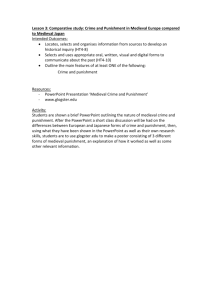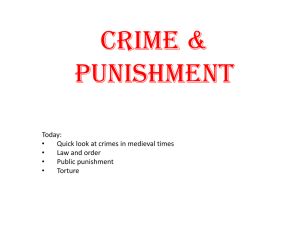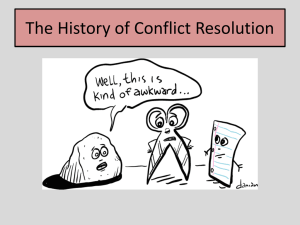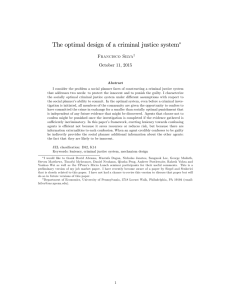Dear Sir/Madam,
advertisement
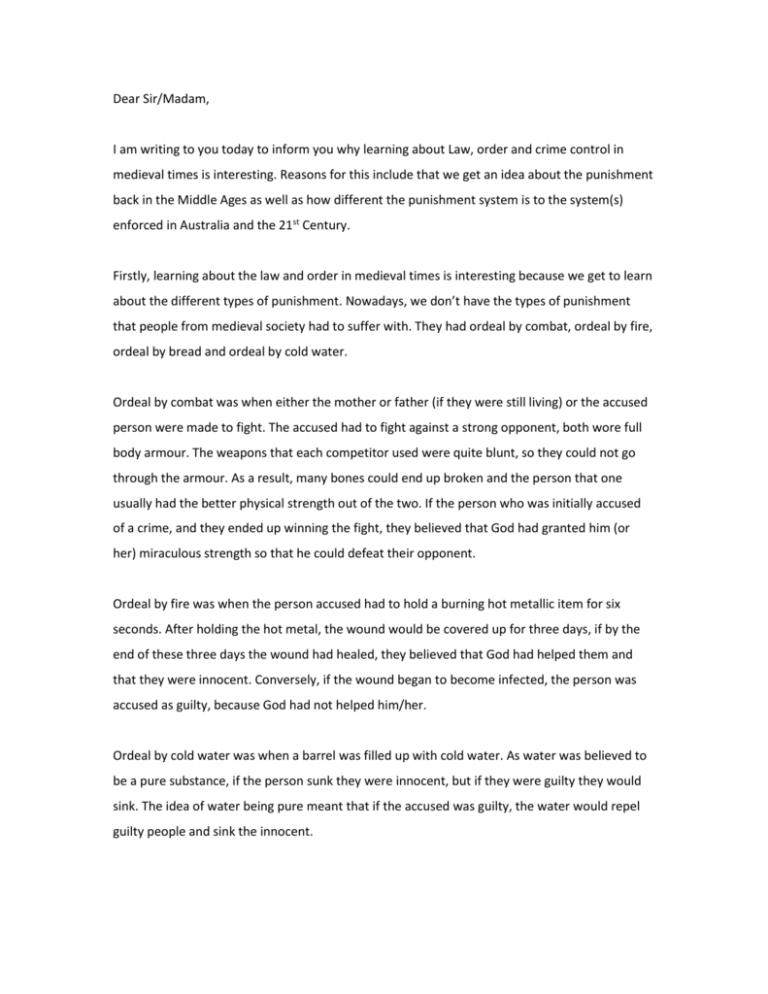
Dear Sir/Madam, I am writing to you today to inform you why learning about Law, order and crime control in medieval times is interesting. Reasons for this include that we get an idea about the punishment back in the Middle Ages as well as how different the punishment system is to the system(s) enforced in Australia and the 21st Century. Firstly, learning about the law and order in medieval times is interesting because we get to learn about the different types of punishment. Nowadays, we don’t have the types of punishment that people from medieval society had to suffer with. They had ordeal by combat, ordeal by fire, ordeal by bread and ordeal by cold water. Ordeal by combat was when either the mother or father (if they were still living) or the accused person were made to fight. The accused had to fight against a strong opponent, both wore full body armour. The weapons that each competitor used were quite blunt, so they could not go through the armour. As a result, many bones could end up broken and the person that one usually had the better physical strength out of the two. If the person who was initially accused of a crime, and they ended up winning the fight, they believed that God had granted him (or her) miraculous strength so that he could defeat their opponent. Ordeal by fire was when the person accused had to hold a burning hot metallic item for six seconds. After holding the hot metal, the wound would be covered up for three days, if by the end of these three days the wound had healed, they believed that God had helped them and that they were innocent. Conversely, if the wound began to become infected, the person was accused as guilty, because God had not helped him/her. Ordeal by cold water was when a barrel was filled up with cold water. As water was believed to be a pure substance, if the person sunk they were innocent, but if they were guilty they would sink. The idea of water being pure meant that if the accused was guilty, the water would repel guilty people and sink the innocent. Ordeal by bread was usually received for people of higher classes. It consisted of having to eat a full piece of bread without chewing. If the accused choked on the bread, they were considered guilty, but if they survived they believed that God had helped them through it. Finally, it is interesting to learn about Law and Order in the middle ages because it is so different to the system that we use in the 21st Century and in Australia. In America, they still have capital punishment (executions by electric chair or lethal injection), but in Australia we do not have this. Learning about the punishments used in the medieval times shows us a different perspective of punishment; and how fortunate we are because we do not have these forms of punishment. It also shows us that their forms of punishment involved their religious beliefs: if you were innocent it showed that God knew you were innocent, or on the other hand, if you were guilty, God knew you were guilty, so you should be executed. However, fortunately we live in more enlightened times and not such superstitious ones. The Medieval era illustrates how dangerous superstitions can be to the individual. In conclusion, I trust I have convinced you as to why learning about medieval law and order is interesting, because it provides education about the different types of punishments; and how it shows us how different the forms of punishments are in the 21st Century. Yours Sincerely, Lucy Field
